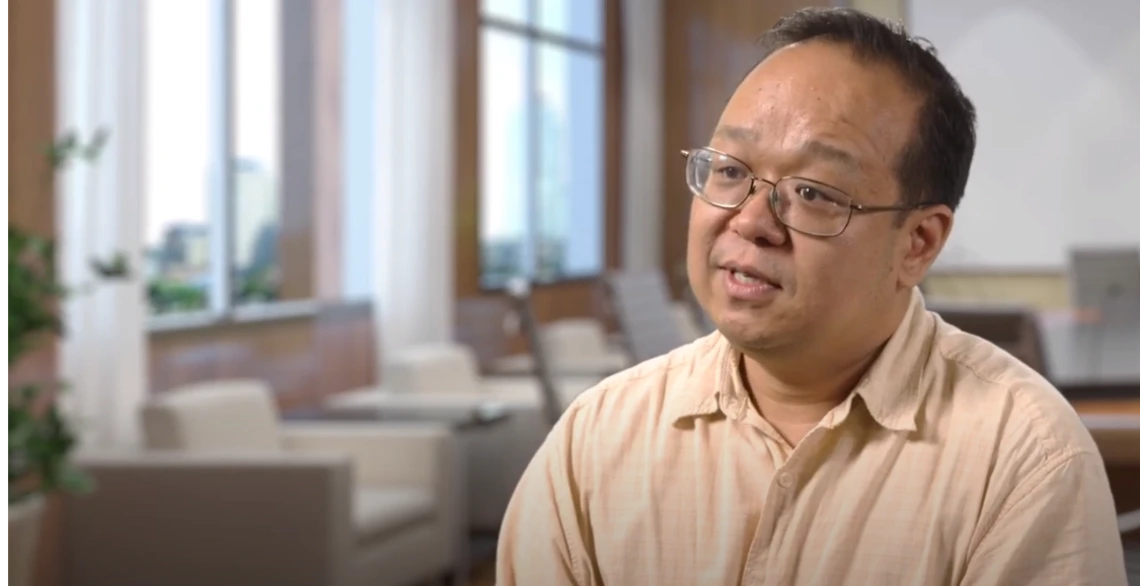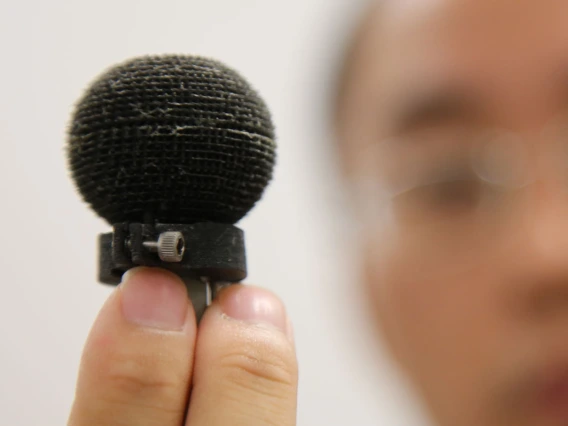Hao Xin Becomes UA Engineering 2020 da Vinci Fellow
From autonomous vehicle technology to medical diagnostics, ECE professor is a pro at moving inventions to market.

2020 College of Engineering da Vinci Fellow Hao Xin (Photo: IBM Data and AI)
University of Arizona electrical and computer engineering professor Hao Xin has a long history of moving research beyond the laboratory and into the commercial world. His work on high-frequency technologies has applications in areas ranging from autonomous vehicles to biomedical imaging and energy harvesting. And his research into metamaterials, which have properties not found in nature, has moved the scientific community closer to technology such as invisibility cloaks.
The College of Engineering named Xin the 2020 da Vinci Fellow for his dedication to advancing academic programs and research in the college over the past 15 years. Da Vinci Fellows receive a one-time grant of $10,000 to support their work. Xin said the award is particularly meaningful because it comes from his home institution and is named for one of the most famous inventors of all time. Da Vinci’s dreams were far ahead of his time. His notebooks contain drawings of machines that look like modern helicopters and tanks, for example.
“Da Vinci is a person every inventor looks up to, and I love inventing things,” said Xin, who has more than 20 patents and leads the Millimeter Wave Circuits and Antennas Laboratory. “I want to invent things that actually help people, and da Vinci is inspiring. Sometimes things like flying cars seem impossible, or sound crazy. But it’s probably going to become a reality in less than 50 years – and less than 500 years from when da Vinci was alive.”
Xin is a fellow of and fills several roles in IEEE, an international professional organization dedicated to advancing technology for the benefit of humanity. He is associate editor for the organization’s Antenna and Wireless Propagation Magazine and the Journal of Radio Frequency Identification. He also serves as the chair of the Young Professionals Committee of the Antennas and Propagation Society and chair of Tucson’s joint chapter of the Microwave Theory and Techniques Society and Antennas and Propagation Society.
“Whether he is patenting an invention, establishing a startup, or bridging the worlds of academia and industry, Hao has been highly successful moving research beyond the laboratory to widely beneficial commercial applications," said David W. Hahn, Craig M. Berge Dean of the College of Engineering. "This, along with his dedication to his students, makes him a fantastic choice for the college’s 2020 da Vinci Fellow.”
Autonomous Vehicles and Additive Manufacturing
Among Xin’s inventions is a 3D-printed version of a Luneburg lens, a device used to increase radar reflectivity. Many high-end vehicles are equipped with multiple types of sensors to enable adaptive cruise control, collision avoidance and other autonomous capabilities. Xin’s Luneburg lens could singlehandedly replace many of these sensors, at a much lower cost. He licensed the product to a startup called Lunewave and is the company’s chief technical officer.
3D printing and similar techniques have opened a number of possibilities for manufacturers. For example, Xin is researching how to use new manufacturing techniques for designing antennas.
“We don’t yet have an efficient way to find out how to take advantage of all those freedoms that weren’t possible before,” Xin said “So, we’re collaborating with groups across campus on new theoretical design techniques.”
Working with Qiang Zhou of the Department of Systems and Industrial Engineering and Helen Zhang of applied mathematics, Xin is combining ideas for machine learning-based design and 3D printing to improve antenna design and manufacturing. The researchers envision their methodology leading to an automated process for antenna design and manufacturing.
“The outcome of this research may help revolutionize the design and manufacturing of antennas widely used in the upcoming era of the Internet of Things,” he said.
From Cancer Detection to Hypersonic Flight
Xin’s interdisciplinary work has a wide range of applications. His thermoacoustic imaging efforts lend to early breast cancer detection and hypothermia treatment. His expertise in microwave frequencies is aiding Erica Corral, associate professor of materials science and engineering in her research on properties of materials used in hypersonic flight.
Xin plans to use the fellowship funding to purchase software for his research in electromagnetic simulation and support student research activities that would not otherwise be possible.
“Hao is internationally recognized for his expertise in antennas and RF circuits, so he is well-deserving of this collegewide recognition,” said Tamal Bose, head of electrical and computer engineering. “We are fortunate to have Hao in the department and look forward to what he will accomplish next.”



